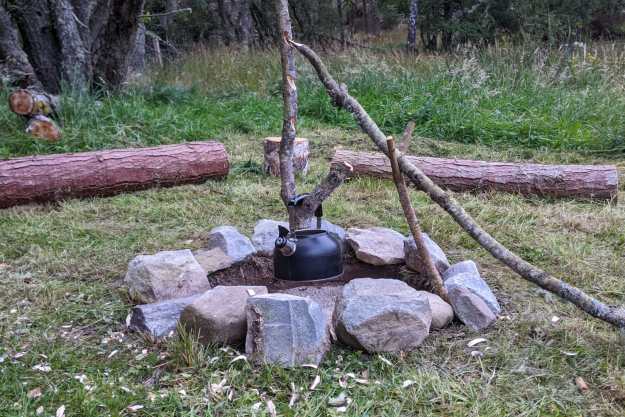As we approach another Earth Day celebration on April 22, we have the opportunity to assess our impact on the environment. Some of us make pledges to reduce, reuse, and recycle. Communities, companies, and even countries have begun eliminating things like single-use plastics, which are a global problem. Over the last decade, more and more outdoor companies have begun reevaluating their commitment to sustainable product development.
Gear manufacturers, for their part, are utilizing more recycled materials, which further reduces the need for raw materials to be created. Additionally, some brands are looking at incorporating recycled materials in the construction of new products that, once they have run their course, are also recyclable on the backend. Here are nine outdoor companies that are using recycled material and reducing their environmental footprint.
Patagonia
Since its founding, Patagonia has remained a strong advocate for the planet. The brand creates products for enjoying wild spaces while remaining committed to protecting those same natural areas. The goal is to be carbon neutral across the entire business (including the supply chain) by 2025. Patagonia has also donated millions of dollars — over $100 million to be exact — to environmental causes and activism.

For example, the new spring line of recycled rainwear utilizes 100% recycled nylon to create the garment’s shell, with sources including discarded fishing nets. New wetsuit offerings are neoprene-free, featuring 85% Yulex (natural rubber derived from sustainable sources) and 15% synthetic rubber. You can also feel good about going to the beach or pool this season with Patagonia’s boardshorts, which are comprised of 65% recycled nylon.
Cotopaxi
Creating one-of-a-kind products with recycled materials that would have likely been discarded is an outstanding approach and one that Cotopaxi takes with its Repurposed Collection. The line includes backpacks, duffel bags, a dopp kit, a fanny packet, and windbreakers. Factories notify the brand when they are stocked with excess materials, so these packs and jackets are crafted using a myriad of color samples — it’s likely that no two items will be alike, and each colorway is released in a limited run.
Mountainsmith
A unique collaboration between REI, Green Guru, and Mountainsmith is a great example of the TEAM (Together Everyone Accomplishes More) concept. Mountainsmith approached REI with a concept to create a waist pack made entirely in the United States. Once the pack was designed by the team at Mountainsmith, REI utilized its resources to collect used bicycle tubes and climbing ropes which they passed along to the team at Green Guru.

The result is a waist pack that is comprised of 83% upcycled materials.
Toad & Co.
Toad & Co.’s spring 2019 line marks the brand’s first achievement of 100% sustainability. Holding true to Toad & Co.’s strict guidelines for creating “Eco” materials, the piece must contain a minimum of 80% sustainable fibers and/or fabrics that are third-party certified for responsible manufacturing.
Two great products that we’re looking forward to sporting this season are the Barrel House Hoodie and the Epique Full Zip Hoodie; the 100% recycled Barrel House is made from 40% polyester (recycled plastic bottles) and 60% cotton; the Epique is made from 55% hemp and 45% recycled polyester.
Nemo
Best known for its groundbreaking tent design, Nemo has branched out in recent years to offer a full spectrum of camping and backpacking gear. A good sleeping bag will provide the average person with many years of quality use, but Nemo has taken it a step further with the new FeatherCore-constructed line and the Primaloft Silver synthetic insulation that contains 70% post-consumer recycled content. The bags are also backed by Nemo’s lifetime warranty.
Costa Del Mar
Costa Del Mar, or simply Costa, has a long-standing reputation for making quality polarized sunglasses. To take it a step further, Costa joined forces with Bureo, who works with fishermen to ensure that discarded fishing nets aren’t polluting our oceans and perpetually harming marine life.

The Untangled Collection gives new life to these discarded fishing nets in the brand’s iconic frames.
Eagle Creek
Long regarded for its well-designed adventure travel luggage and accessories, Eagle Creek has taken thigs a step further with the Gear Warrior collection of wheeled luggage and travel packs. The new line utilizes sustainable fabric comprised of 100% recycled PET ripstop and recycled coating.
Backcountry
Backcountry, the outdoor goods online retailer turned gear and apparel maker, has created a flannel shirt with Seawool, a material utilizing recycled oyster shells. You read that correctly. Recycled oyster shells. Paired with a stretch polyester, the Rockport Seawool Flannel Shirt — like regular wool — is warm, naturally odor resistant, and moisture-wicking, and doesn’t wrinkle easily. The Rockport shirt is currently the only Backcountry offering with Seawool, but it comes in two colors: mustard and gray.
Astral
A company that seeks to put “Nature First,” Astral’s mission is to create the best-performing products in the least toxic way. The brand’s latest eco-conscious lifestyle shoes pair recycled polyester and sustainable hemp. We’re partial to the Hemp Baker.
Editors' Recommendations
- Why United By Blue, An Outdoor Clothing Brand, Wants Your Local Waterway’s Trash
- How Keen Is Making Better Shoes and an Even Better Footprint
- Arc’teryx Wants to Buy Back Your Used Gear for the Good of the Planet


